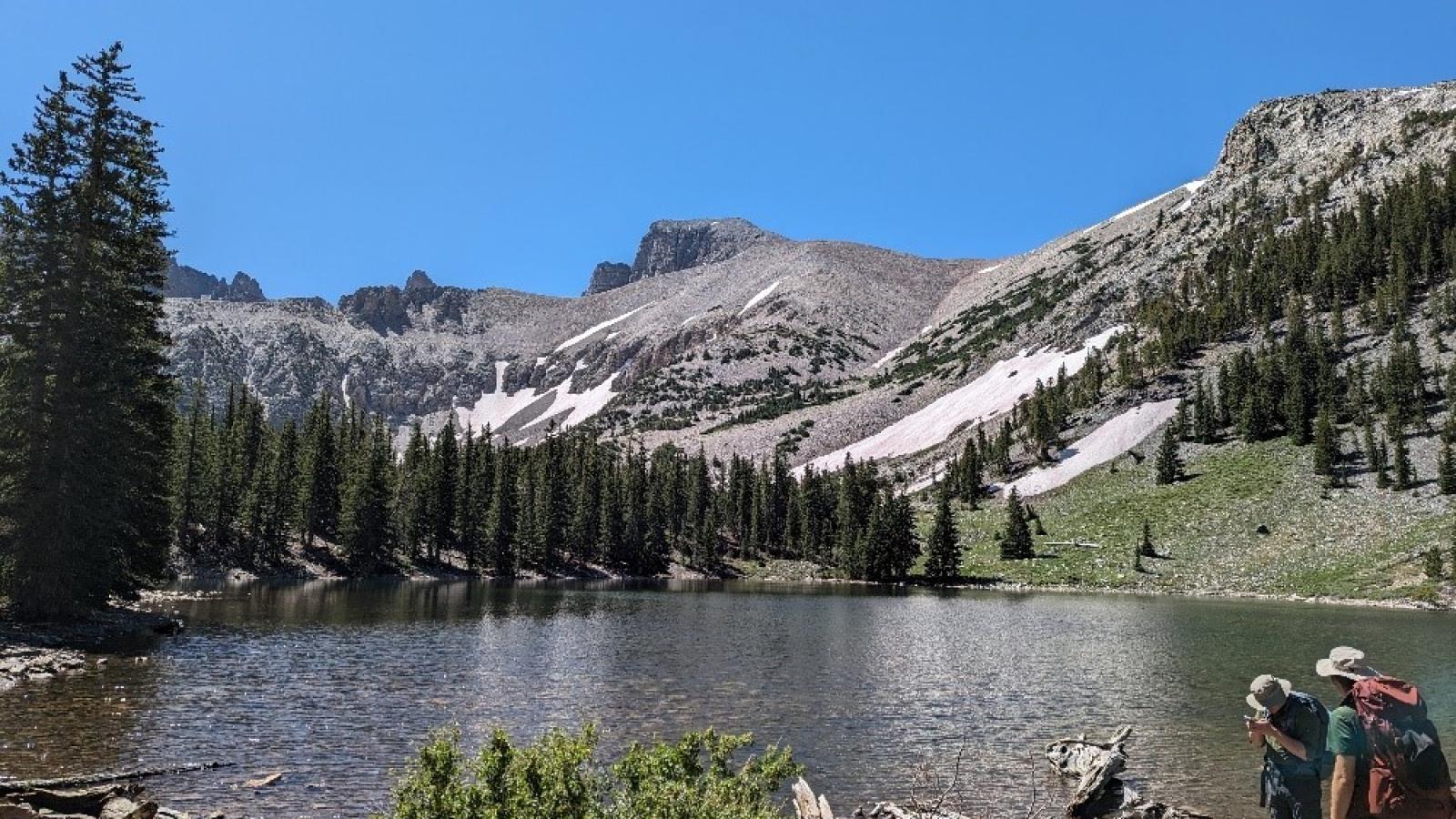In August 2022 and 2023, Emily Mazan, a PhD in the Glacier Environmental change lab, joined researchers from OSU, the University of Georgia, and Sinclair College in the Great Basin Research Experience. Throughout Great Basin National Park, Nevada, 29 near-surface temperature and humidity sensors are hung in trees and poles, recording hourly observations. Annually, researchers spend a week in the field, hiking to each of the sensors to change the batteries and download the data. Replacing these temperature and humidity sensors is just one of many pieces of fieldwork performed annually at Great Basin National Park by the Glacier and Environmental Change Lab.


The network of sensors was established in 2006 and is still active today. Emily uses this data from the near-surface atmosphere to help the national park understand how the park changes as global temperatures increase. She has found that temperatures in the Great Basin National Park have increased between 2006 and 2020, with the greatest rates of change occurring during the winter and at night. Understanding these changes can help inform the national park of future trends in precipitation, shifting plant and animal patterns, and hydrological changes throughout the park.

